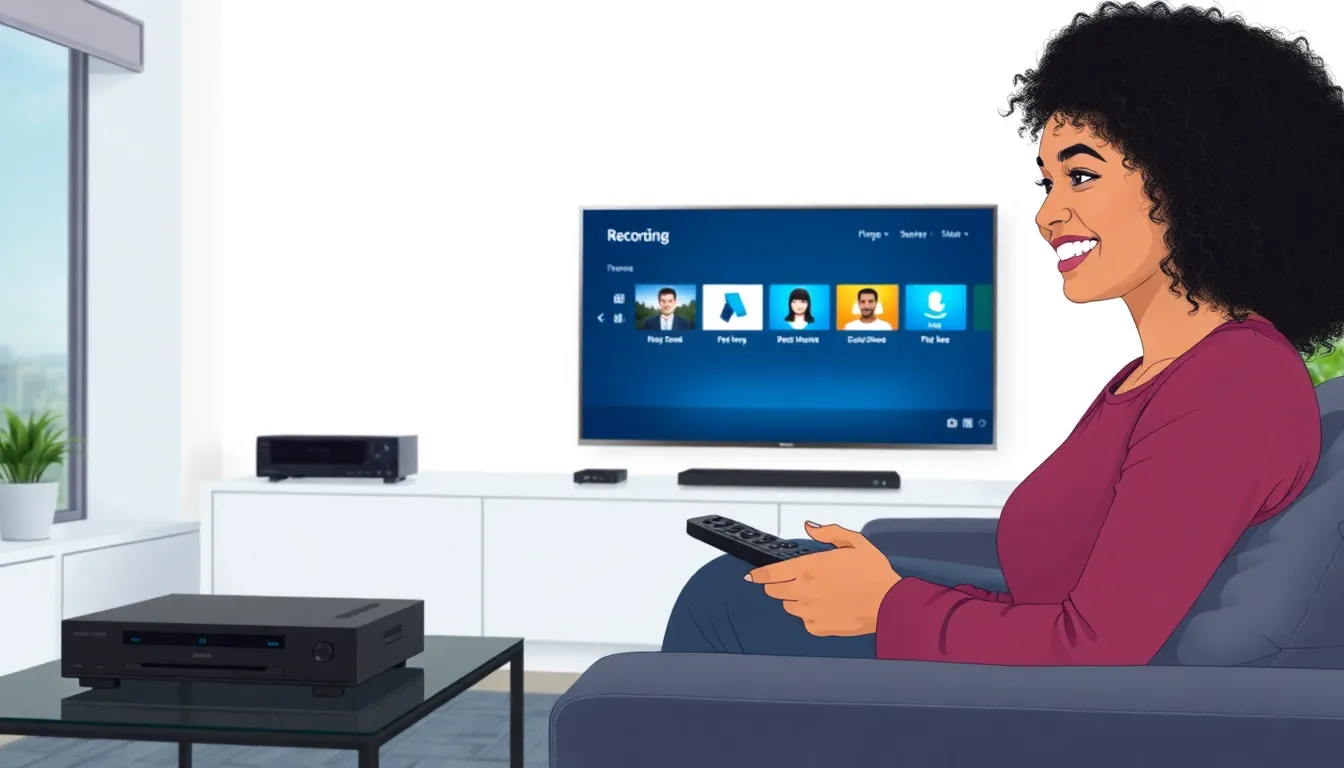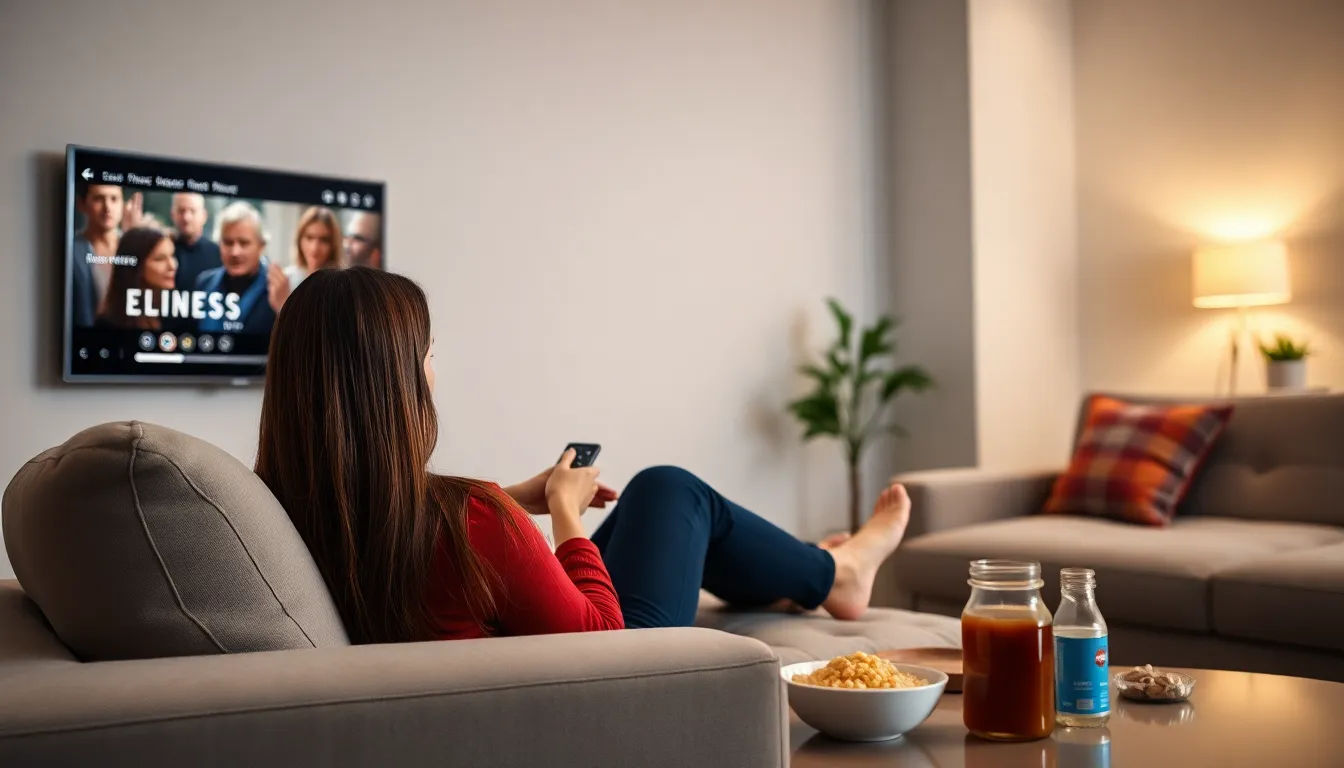Table of Contents
ToggleIn a world where binge-watching has become a competitive sport, knowing how to record streaming video on a smart TV is like having the ultimate cheat code. Imagine this: you’re cozy on the couch, snacks in hand, and just as the plot thickens, life throws a curveball. Whether it’s a surprise visit from Aunt Edna or a sudden power outage, you don’t want to miss that cliffhanger.
Understanding Streaming Services
Streaming services offer a convenient way to watch movies, TV shows, and more. Understanding these platforms helps users choose the best options for their viewing needs.
Types of Streaming Services
Subscription-based models include popular platforms like Netflix, Hulu, and Amazon Prime Video. These services provide extensive libraries of content for a monthly fee. Ad-supported services, such as Peacock and Tubi, offer free access in exchange for occasional advertisements. Live TV streaming options, like YouTube TV and Sling TV, allow users to watch real-time broadcasts and events. Choosing the right type impacts viewing flexibility and cost.
Device Compatibility
Most streaming services support multiple devices, including smart TVs, smartphones, and tablets. Compatibility mostly covers popular brands, like Samsung, LG, and Sony. Smart TVs typically come pre-installed with apps for major streaming platforms. Consoles, such as PlayStation and Xbox, serve as additional options for accessing these services. User experience varies across devices, making it essential to check for app availability ahead of time.
Recording Options for Smart TVs

Recording streaming video on smart TVs involves various options to ensure users don’t miss their favorite shows. Understanding these options helps in selecting the best method for capturing content.
Built-In Features
Many smart TVs come equipped with built-in recording features. These functionalities allow viewers to record live broadcasts directly to the TV’s internal storage or a connected USB drive. Options like Time Shift enable users to pause live TV and resume watching later. Additionally, select models support cloud storage with compatible streaming services, offering flexibility for users who prefer using online storage solutions. These built-in features streamline the recording process, making it user-friendly for all types of viewers.
External Devices
External devices offer another way to record streaming content on smart TVs. Digital Video Recorders (DVRs) capture live TV shows and store them for later viewing. Many modern DVRs allow integration with streaming services, expanding the library of recordable content. Other options include external capture cards, which connect to computers or gaming consoles, enabling users to record streaming video directly from their screens. These devices typically come with user-friendly software, simplifying the recording process while enhancing storage options.
Step-by-Step Guide to Recording
Recording streaming video on a smart TV requires understanding the available features and tools. The following steps outline the best methods.
Using Built-In Features
Using built-in features simplifies the recording process. Many smart TVs have integrated recording capabilities that allow users to save live broadcasts directly to internal storage or a USB drive. To access these features, users usually navigate to the program guide and select the desired show or movie. Features like Time Shift enable pausing live TV and resuming later. Check the TV’s user manual for specific instructions, as the interface may vary by model. Additionally, some smart TVs offer cloud storage options if supported by the streaming service, making it easy to access recorded content from multiple devices.
Connecting External Devices
Connecting external devices enhances recording capabilities on a smart TV. Digital Video Recorders (DVRs) capture live television shows, and many models seamlessly integrate with popular streaming services. Setting up a DVR involves linking it to the smart TV through an HDMI cable and configuring the connection properly. External capture cards also serve as useful devices for recording, allowing users to capture content directly from screens. Choose a capture card compatible with the TV and follow setup instructions provided with the device. Using these external solutions maximizes the options available for recording and playback of favorite programs.
Legal Considerations
Understanding legal considerations is crucial when recording streaming video on smart TVs. Compliance with copyright and service terms protects both content creators and users.
Copyright Issues
Copyright laws govern the reproduction and distribution of media. Recording streaming video may violate these laws if content is shared or redistributed without permission. Users must only record shows for personal use, avoiding any public sharing or monetizing. Unauthorized distribution, even through social media, can lead to legal repercussions or account suspension. Always check the specific copyright notices from streaming services to avoid potential issues.
Terms of Service
Terms of Service outline the rules users agree to when accessing streaming platforms. Recorded content may fall under specific usage restrictions, which vary by service. Each service, like Netflix or Hulu, states how users can interact with their content, including recording limits. Users must read these terms carefully, as violations may result in account termination or legal action. Recognizing the platform’s policies helps ensure compliant usage of their services.
Mastering the art of recording streaming video on a smart TV opens up a world of convenience for viewers. With the right tools and understanding of available features users can ensure they never miss a moment of their favorite shows. Whether utilizing built-in recording options or integrating external devices like DVRs and capture cards each method enhances the viewing experience.
Staying informed about legal considerations is equally crucial to protect personal usage rights. By adhering to copyright laws and service terms users can enjoy their recorded content without worry. Embracing these practices allows for a seamless and enjoyable binge-watching experience tailored to individual preferences.







